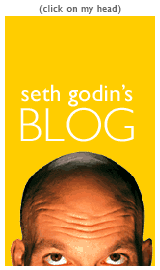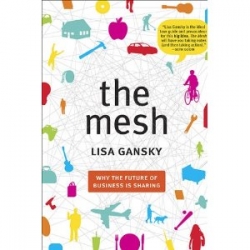
Source 1: Collateral Damage–US Covert Operations and the Terrorist Attacks on September 11, 2001
I did an interview on September 7th for the Community Learning Exchange –CLExchangeonair with Cheryl Fields on Blog Talk Radio.
EXTRACT:
In the 1990′s I managed software projects. I was excellent at figuring out the steps that needed to be done and then making those steps happen — planning the work and then working the plan.
As the projects got bigger and more complex, I ran into a one that involved enough people with different opinions that that old approach just didn’t cut it.
Fortunately, I had the opportunity to work with someone who understood how to work in a different way. Once I experienced it, I had to learn more.
See Also:
TED: Sugata Mitra–The child-driven education
Worth a Look: Engaging Emergence
Reference: Peggy Holman Free Video on Emergence
Reference: 21st Century Leadership-12 Guidelines
Who’s Who in Collective Intelligence: Peggy Holman
Review: The Leader’s Guide to Radical Management–Reinventing the Workplace for the 21st Century
….in the future, any company that lacks a vital core of Gen F employees will soon find itself stuck in the mud.
With that in mind, I compiled a list of 12 work-relevant characteristics of online life. These are the post-bureaucratic realities that tomorrow’s employees will use as yardsticks in determining whether your company is “with it” or “past it.” In assembling this short list, I haven’t tried to catalog every salient feature of the Web’s social milieu, only those that are most at odds with the legacy practices found in large companies.
1. All ideas compete on an equal footing.
2. Contribution counts for more than credentials.
3. Hierarchies are natural, not prescribed.
4. Leaders serve rather than preside.
5. Tasks are chosen, not assigned.
6. Groups are self-defining and self-organizing
7. Resources get attracted, not allocated.
8. Power comes from sharing information, not hoarding it.
9. Opinions compound and decisions are peer-reviewed.
10. Users can veto most policy decisions.
11. Intrinsic rewards matter most.
12. Hackers are heroes.
Read full post in glorious detail.
Tip of the Hat to Steve Denning at LinkedIn.
Phi Beta Iota: We've been skirting all of these since 1988, and even more so since we opened Hackers on Planet Earth (HOPE) in 1994. Please do read the full articulation, and pass it on. It's is the single best summary we have found to date.

The term “Social Good” has been bandied about, but pinning down exactly what it means in concrete terms can sometimes be tricky. Is social good the same as “the common good”? Is it the same as normal fundraising? Is it just online giving, or is it particular to social networks and web trends?
Social good is equal parts online fundraising and advocacy via social networks. While the Internet has been used before by non-profits and charities to raise money, social good implies more than just money changing hands. Social good campaigns often combine the ability of the Internet to find, introduce and bond communities around a common interest. That interest, in this case, is usually a problem worth fixing.
Where social good starts to get fuzzy is just how that problem gets fixed. Social good campaigns can be about building safe, entirely free, online support communities, spreading awareness through updates, raising cash, or a combination of all three.
Tip of the Hat to Pierre Levy at LinkedIn.
Phi Beta Iota: Our colleague Harrison Owen keeps stressing that the Internet has unleashed a new level of self-organization, and we are starting to realize how right he is. What is missing in our view is a service of common concern that provides public intelligence about the true costs of every good and service (while outing corruption through transparency), and at the same time connects the one billion rich to the five billion poor one micro-need at a time BUT visible to those who wish to aggregate needs and solutions. This is illustrated in Graphic: Global Range of Nano-Needs and discussed coherently and in detail in 2010 INTELLIGENCE FOR EARTH: Clarity, Diversity, Integrity, & Sustainability.


Rule 1: Understand the goals and expected outcomes of end-user information requirements
Rule 2: Remove spreadsheet based reporting
Rule 3: Establish a data quality competency centre
Rule 4: Unlock your enterprise from the transaction-based application for reporting needs
Rule 5: Get the analysis of your data done in-house
Phi Beta Iota: CEO Mehta personifies integrity and intelligence. The full article explaining each of the rules should be required reading in both MBA and MPA courses. It merits comment that he is talking primarily about Enterprise Resource Planning (ERP) and secondarily about Customer Relations Management (CRM). As Review: Rethink–A Business Manifesto for Cutting Costs and Boosting Innovation draws out, both of these are being superceeded by Services-Oriented Architecture (SOA) in the Cloud. See also Reference: The Next Revolution in Productivity; and Review: Knowledge As Design as well as our own Graphic: The Four Quadrants of Knowledge and Review: The Leader’s Guide to Radical Management–Reinventing the Workplace for the 21st Century.
Tip of the Hat to Dhiren Gala at LinkedIn.

The Mesh is here (don't miss it)
My friend Lisa Gansky has a new book out today. You can read a bit about it here.
I hope you'll buy a copy right now. It's that important and that valuable.

Gansky has written the most insightful book about new economy business models since The Long Tail, and if you're not facile in understanding and working with the key concept behind this book, it's going to cost you time and trouble.
In short, the Mesh outlines how sharing resources and information creates an entirely new class of commerce. When you travel to another city, you don't buy a house. You stay in a hotel. A hotel, because it allows hundreds of people a year to share a single room, is a mesh business.
The thing is, the web has created thousands (probably more) of these businesses in areas you have never thought about. Zipcar, sure, and Netflix. But in all sorts of nooks and crannies as well. Lisa's online directory already lists thousands of these companies. Existing companies need to know about this, job seekers should be attracted to it, and for entrepreneurs, it really is a new frontier.
Go, hurry, the race is on. $16 well spent.
2010 INTELLIGENCE FOR EARTH: Clarity, Diversity, Integrity, & Sustainability

All government is local 2.0: manor.govfresh
Manor, a small town in Texas a few miles from Austin, has become an unlikely star player in the new world of “Government 2.0.” This week Manor and GovFresh, an organization that provides news and information about technology innovation in government, joined forces to host a conference on “big ideas for local America.” The conference highlighted the work Manor, nearby DeLeon, and other small governments in the U.S. are doing to incorporate social media and open data approaches to provide better information and services to citizens, and to engage them more effectively. This is part of an open government trend that’s been brewing since the 1990s, but is catching fire with pervasive Internet adoption and digital convergence.
Continue reading “Journal: Government Opening Up from Bottom Up”